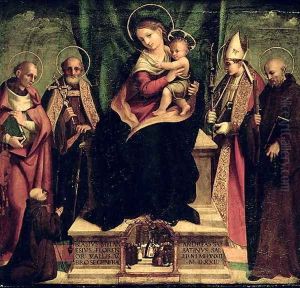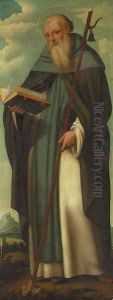Andrea Sabatini Paintings
Andrea Sabatini, also known as Andrea da Salerno and Andrea Sabatini da Salerno, was an Italian Renaissance painter who was active during the early 16th century. He was born around 1488 in Salerno, a town in southern Italy. There is not much known about his early life or training, but it is believed that he may have been a pupil of Francesco Solimena, a prominent painter of the time, or that he may have been influenced by the works of Raphael and Leonardo da Vinci, whose styles were becoming widely disseminated.
Sabatini's works are primarily religious in nature, reflecting the dominant themes of the Renaissance period. He is especially noted for his frescoes and altarpieces. His painting style is characterized by graceful figures, a vivid use of color, and a clear influence of the High Renaissance aesthetics. He was among the first artists in southern Italy to reflect the advances made in the central Italian art centers such as Rome and Florence.
One of Sabatini's most famous works is the fresco cycle in the San Benardino church in Salerno, which includes a notable 'Annunciation' scene. His other significant works include 'The Madonna with Child and Saints' for the Cathedral of Salerno and 'The Virgin and Child with Saints' for the church of San Giorgio in Salerno.
Despite his talent, Andrea Sabatini did not gain the same level of fame as some of his contemporaries. Nevertheless, he played an important role in bringing the innovations of the High Renaissance to southern Italy, where the artistic traditions had remained more conservative and were slower to reflect the changing tastes and techniques of the time.
Andrea Sabatini's exact date of death is unclear but is believed to be in 1530. His works were appreciated for their devotional clarity, and after his death, his style influenced local artists in Salerno and the surrounding region. Although not as widely known as some of his peers, Sabatini's contributions to Italian Renaissance art have been recognized by art historians, and his works are considered significant for their role in the diffusion of Renaissance ideals in the south of Italy.

